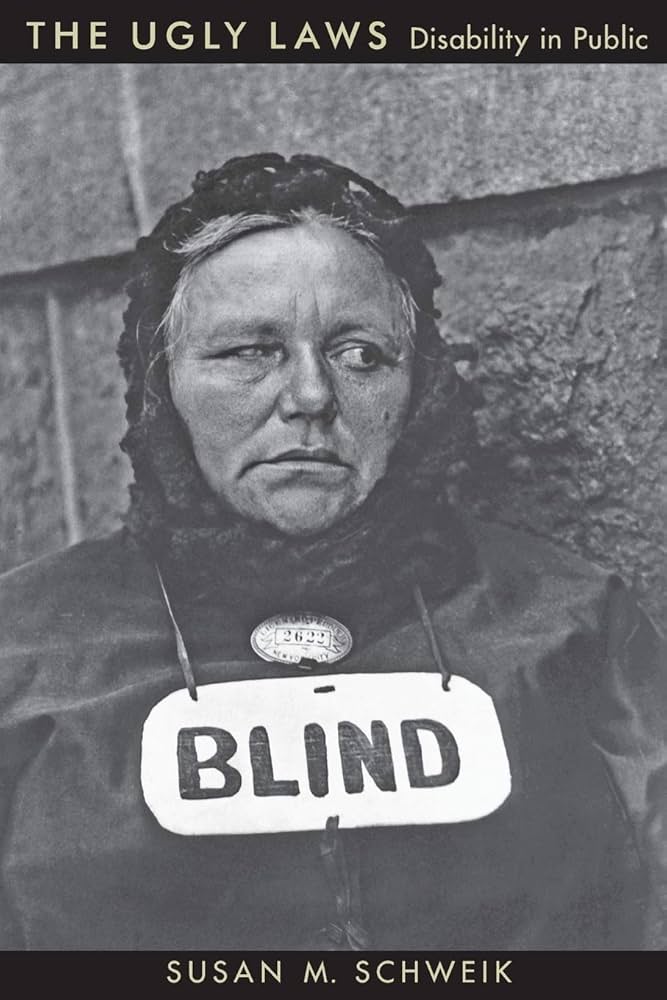Sparked in part by an influx of disabled Civil War veterans, ugly laws fined poor, disabled people for begging, or just existing, on city streets—often followed by institutionalization in brutal 19th-century facilities that offered little or nothing in the way of treatment.
Ugly laws quickly spread across the country, and never entirely went away. Pushes to police, incarcerate, or drive out unhoused and disabled people have been a constant in American life—and hardly just a Republican thing, with high-profile Democratic politicians like California Gov. Gavin Newsom or New York Mayor Eric Adams prominently endorsing encampment sweeps and forced institutionalization.
To understand more about the Ugly Laws and their legacy, I spoke with University of California, Berkeley professor emeritus Susan Schweik, who is also the author of the book The Ugly Laws: Disability in Public.
What societal issues contributed to the first Ugly Law in San Francisco in 1867?
Let me first say that we know about this law because of the disability movement in the 1970s. Franklin D. Roosevelt and Helen Keller were never going to get arrested under this ordinance, which prohibited diseased, maimed, deformed bodies from exposing themselves to public view. It was a status offense. This law was directed against poor people.
It’s extremely important to understand it as part of a big cluster of vagrancy laws that were being practiced in the South after the Civil War, and that US northern abolitionists who went down to fight slavery, unfortunately, saw the effectiveness of the vagrancy law in the South was being used to substitute for slavery.
Abolitionists brought that back up to the cities in the north, which were under all kinds of pressure. People no longer knew the people they passed on the street. Streets were crowded. Poverty was extreme. There were no safety nets. So it targeted poor people. It targeted poor people who were begging, or who were understood to be begging and disability. Being disabled on the street at all could be construed as begging; whether you were putting a hand out or shaking a cup or saying anything to anyone, it was possible to be understood as asking for people’s pity.
What types of punishments did poor, disabled people face under the Ugly Laws?
At some point, I realized that if I could figure out when a city opened its first almshouse or poor house, it was quite likely that the unsightly begging ordinance would happen, because they had a place to sweep people off the street.
